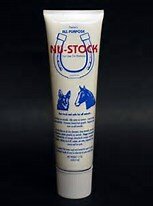It_is_I_Rae
Songster
- Oct 30, 2019
- 298
- 342
- 181
I treated my chickens with topical ivermetcin almost a year ago for lice and leg mites. I think it took care of the lice because I haven't really seen any on my chickens since then but they appear to still have leg mites. The legs mites have been an ongoing problem for a few years now. There don't seem to be a lot of options for treating it. I've tried different treatments over the years like dipping their legs in vegetable oil, which didn't work because it was too messy and the chickens kept spilling and trying to drink the oil, Vaseline, which is less of a hassle than oil but also very messy and causes bedding to stick to their feet, and topical ivermetcin. Most of them don't have it very bad but a couple of their feet look rough. Should I try Ivermetcin again or will using it again cause parasites to become resistant? Are there any treatments for leg mites that are more effective?





